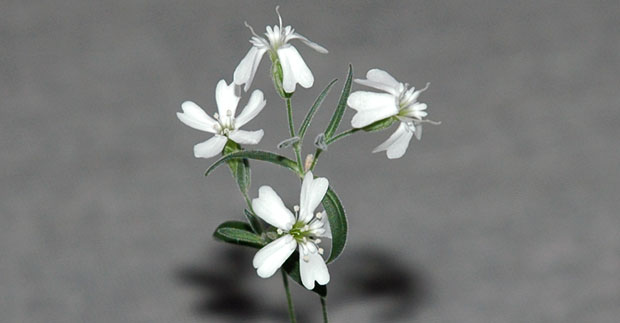Siberian ice age flower is reborn
No word yet on whether they plan to try and extract dinosaur DNA from a mosquito preserved in amber.
About 32,000 years ago in Siberia, a squirrel industriously hoarded a whole lot of seeds and fruits in a river bank. Last winter, a team of Russian scientists coaxed some of the seeds into blooming in the lab, and an ancient white flower has been brought back to life.
In 1995, Russian researchers studying ancient soil composition ran across about 70 squirrel burrows from Upper Pleistocene rodents. Each burrow was packed full of stored seeds, nuts, and fruits - some burrows held up to 800,000 ancient treats. The squirrels never returned to claim their spoils, but the researchers found that some of the buried plant material was still viable.
The burrows were located below the permafrost line, where the ground remains frozen year round. In the burrow chambers the conditions were stable: they were 125 feet below the ground level, and kept at a constant temperature of about 20 degrees. It was perfect storage conditions, cool and dry and dark, except for one thing: the rock walls around the burrow contain radioactive elements, which would have slowly bombarded the seeds with radiation over the eons. Not much radiation, granted, but 32,000 years is enough time for a lot to accumulate.
